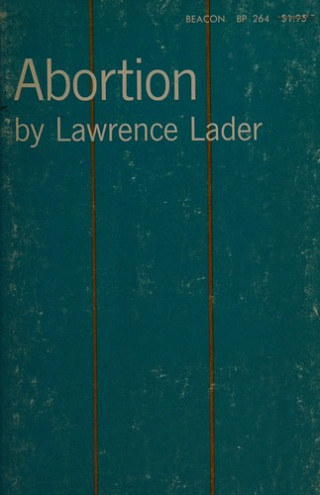When, in 1962, Lader decided to write about abortion’s history and present-day consequences, he received little support at first. He was a seasoned magazine writer with two published books. Even so, he was surprised that—even with all his connections, even as a white man—it was impossibly difficult to find an editor willing to publish a pro-legal abortion article in a mainstream magazine. In letter after letter, he pitched a long-form article that would present his research on the impact of anti-abortion laws to show the harm they caused. No editor was willing. One wrote back that he had become “a little squeamish on the subject,” and he recommended Lader “find an editor with more guts.”
Rather than give up on the project, Lader decided to dive deeper, and he wrote a book proposal. Abortion would be the first book to explore the history of the procedure in the US and make a case for repealing all abortion laws. It was a radical decision, and Lader knew it would open him up for attack. He also worried that it might kill his career as a magazine writer and ensure he was never again offered an assignment. Still, he decided to forge ahead. More than 12 publishers rejected the proposal before he found an editor willing to give him a book contract with the Bobbs-Merrill Company. In 1964—when Lader was knee-deep in abortion research—there were an estimated 1.1 million abortions a year in the US. Only 8,000 of those were legal “therapeutic” abortions, performed in hospitals that were approved by a panel of doctors. In 1955, therapeutic abortions for psychiatric reasons made up 50 percent of all hospital abortions; by 1965, only 19 percent of abortions were given for psychiatric reasons. That means that almost all women sought the procedure illegally. Of those 8,000 legal abortions in hospitals, virtually none was given to Black and Puerto Rican women.
As Lader wrote, there was one abortion law for the rich and one for the poor. In other words, only women with financial means could buy their way to a hospital abortion given under safe and legal conditions. In Abortion, he argued that legal abortions should be available outside the hospital setting—in freestanding abortion clinics—because hospitals too often treated patients as “pawns” and cared more about preserving their reputations than about preserving the health of their patients. He also saw how some hospitals still sterilized patients against their will as the price for agreeing to offer an abortion.
